OVERVIEW
From Goodwick to Melyn Tregwynt, this is the first stage of the Welsh leg of the pilgrim path. After arriving at Fishguard ferry terminal you climb up to the Pembrokeshire Coast Path National Trail via the Celtic church and holy well at Llanwnda. This is where French and Irish solidiers landed in 1797 in what is referred to as the last invasion of Britain. It was in fact a diversionary raid to draw British soldiers away from Ireland during the Irish Rebellion of 1797-8.
Following the Pen Caer peninsula, there are stunning views of headlands and coves to Stumble Head lighthouse – a great place to spot seals, dolphins and seabirds. Twice a week volunteers come here to monitor wildlife numbers in Britain’s only marine National Park. You can still squeeze into a hermit’s cell from the Age of the Celtic Saints at the foot of Garn Fawr near Pwll Deri. This majestic and wild landscape has also inspired artists for centuries. Pause to hear the poem – Pwll Deri – by the Welsh bard Dewi Emrys.
Continuing along the coast path you come to Aber Bach, where you can take a short diversion inland to the woollen mill at Melin Tregwynt with its famous Welsh wool blankets and an excellent café where you can finish the stage with a well-earned coffee or maybe a bowl of cawl, a traditional hearty Welsh soup, and Welsh cakes.
HIGHLIGHTS / PLACES OF INTEREST
Llanwnda
Llanwnda has been a spiritual site for thousands of years, with a holy well which is cared for to this day.
If you have time, explore the rocky outcrop above Llanwnda (Garnwnda) for neolithic burial chambers and evidence of Iron Age hillfort settlements.
Visit St Gwyndaf’s Church which is usually open to visitors during the day. Established by this Breton saint in the 6th century, look out for Celtic stones built into the outer church walls. Also of interest is the 17th century Welsh language Bible in a glass case inside which survived being used as kindling by French troops in the ill-fated 1797 raid.
Strumble Head Lighthouse
Strumble Head Lighthouse is an excellent lunch stop and there is shelter in an old WW2 Submarine station that is now used as a wildlife look out spot. The nature and sense of being out on the edge here is both dramatic and humbling. The action of the lighthouse, shining its light in a steady rhythm day and night brings back a conversation with a monk on Caldey island who described the duty of the monk to send prayers like light out into the darkness in the hope that they might save someone who is struggling in their life:
May your light shine out
To reach those at sea who have lost their way
May your light shine out
To reach those at sea without hope
May your light shine out
To reach those drifting towards hidden rocks
May your light shine out
To guide us to the safe haven of your love.
(Iain Tweedale)
Dewi Emrys Memorial
This coastal route to St Davids has inspired poets and artists over the centuries and the art they have created makes the Wexford–Pembrokeshire Pilgrim Way distinctive from other pilgrim paths. One such artist is Dewi Emrys who is commemorated by a memorial stone overlooking Pwll Deri. His poem of the same name, written in the Welsh language with its distinctive Pembrokeshire dialect, evokes life in the summertime overlooking the steep coastal cliffs.
Extract from Pwll Deri by Dewi Emrys
You can park yourself on an oaken settle
And listen to the shepherd’s tale,
He won’t talk much of the knock he got
Rescuing a lamb from a perilous spot;
Far less admit it took rope and chain
To pull him safe to the top again;
But with a catch in his voice, he might touch on
What sent him down through rocks and thorns:
Not the animal’s price in market sum
But its cry as it bleated for someone to come;
And he’ll talk a while of another Man
Who gave his life to save his lambs:
And those are the things that come to mind
Above Pwllderi in the summertime.
(Dewi Emrys)
1797 Memorial
This is found at Carregwastad, the landing site of the French Invasion in 1797. This was a diversionary raid to draw British troops away from Ireland in support of what became the 1798 Rebellion. A memorial stone marks the headland where the French troops scrambled up the cliffs to raid the local farms and get drunk on the local homebrew before being rounded up by Jemima Fawr. The story is impressively commemorated on a 30 metre tapestry housed in the Town Hall in Fishguard.
Hermit's Cell
From Strumble Head continue on the rugged coast path with a long climb towards Pwll Deri. You will find a Youth Hostel here and an ancient hermit cell next to the bench at the nearby holiday cottages below the remains of the Iron Age settlements both up on Garn Fawr and at Dinas Mawr.
The hermit cell is a remarkable survivor from the Age of the Saints. It is possible to squeeze in through the tiny entrance and then to stand tall inside. As your eyes become accustomed to the darkness the surprisingly spacious interior was once home to a member of the Celtic equivalent of the Desert Fathers who escaped civilization in Egypt to seek God without the daily distractions of normal life. These hermits would be sought out by pilgrims on the way to St Davids to ask for advice and prayer on how to live a good life.
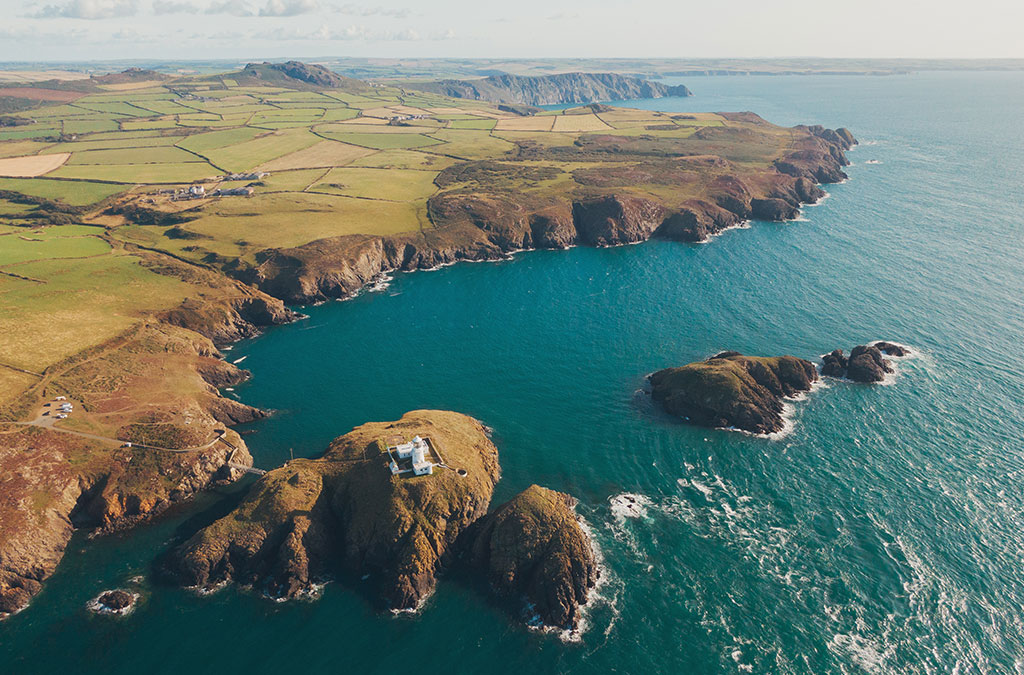
Pencaer Peninsula
Photo Credit - Celtic Routes
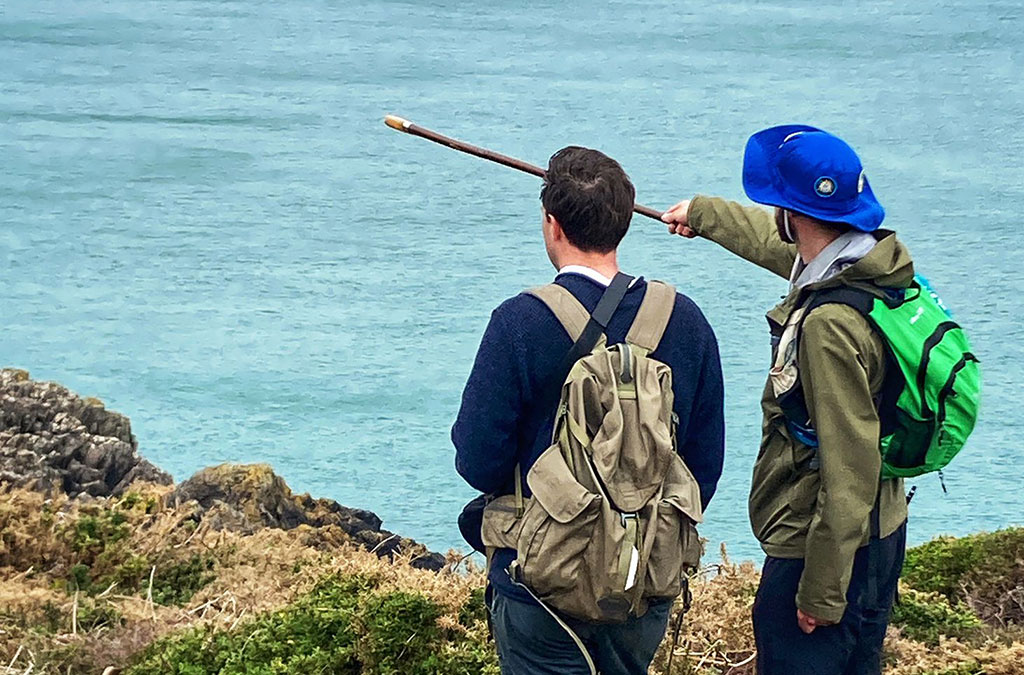
Pilgrims
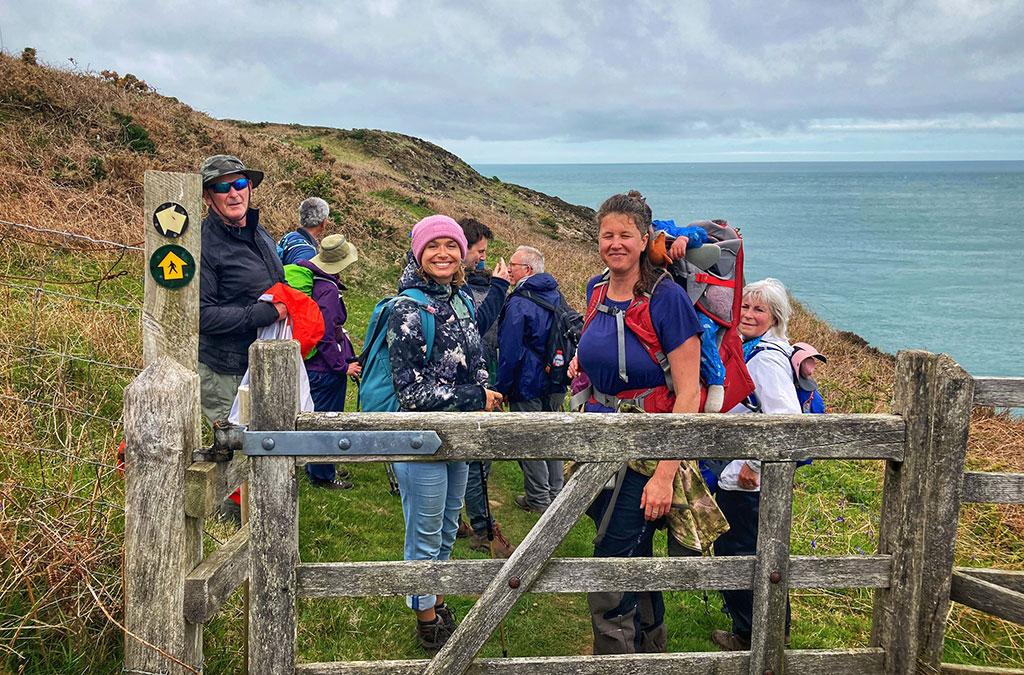
Camino May 2022
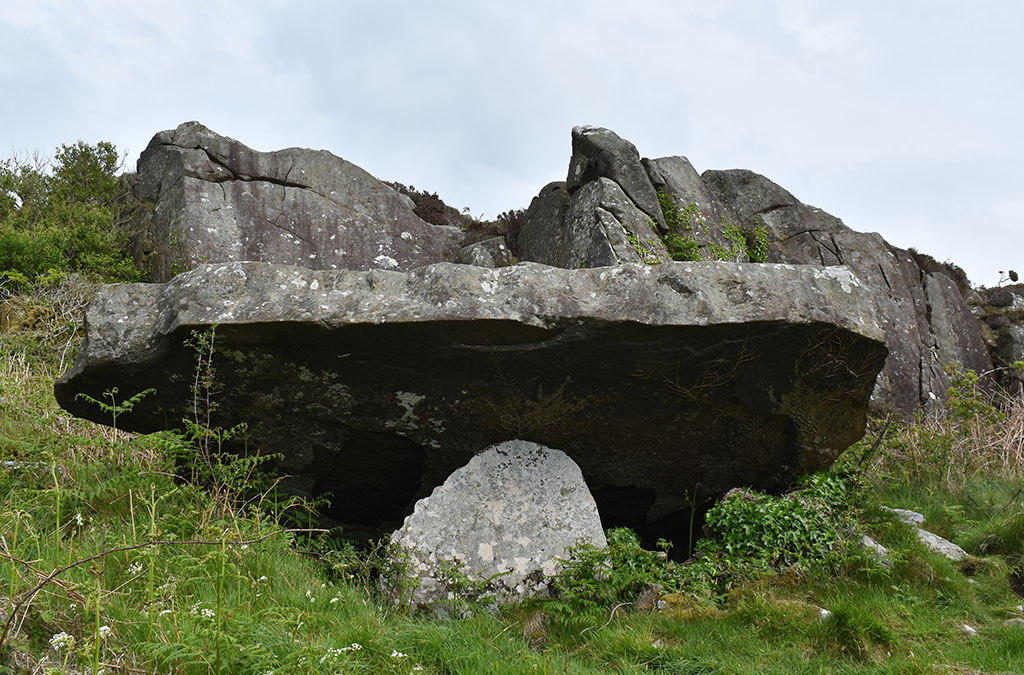
Burial Chamber
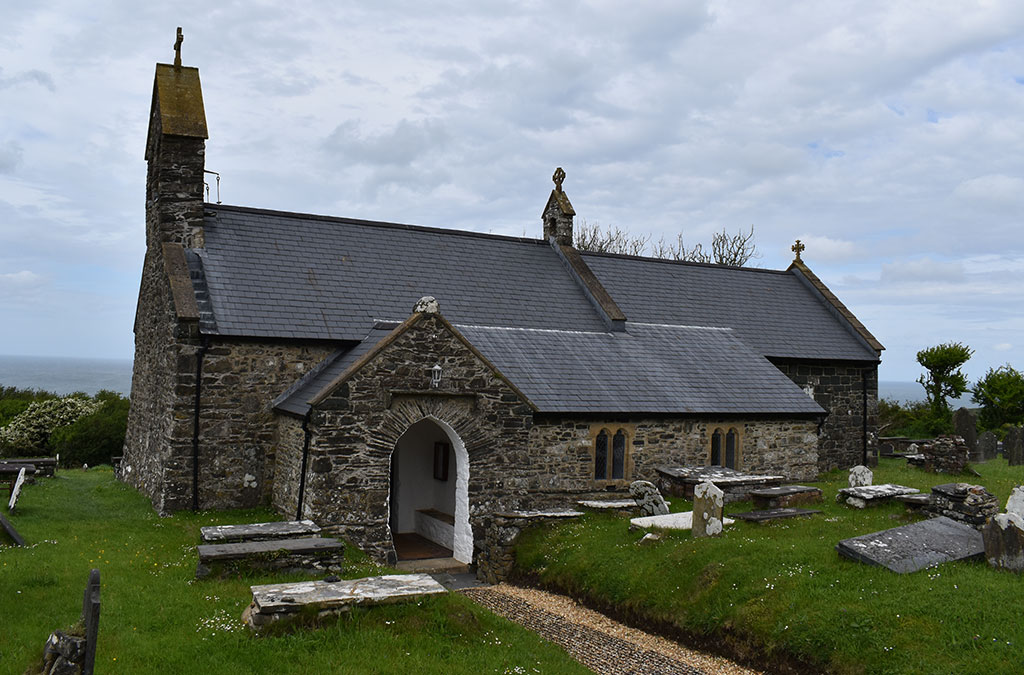
St Gwyndaf's Church
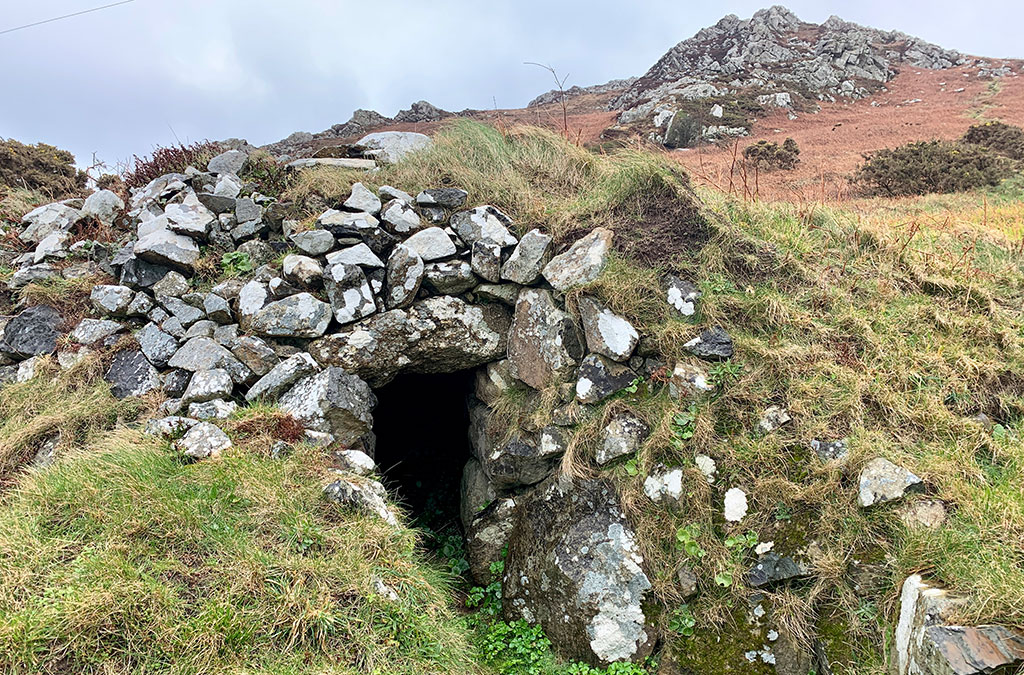
Hermit Cell
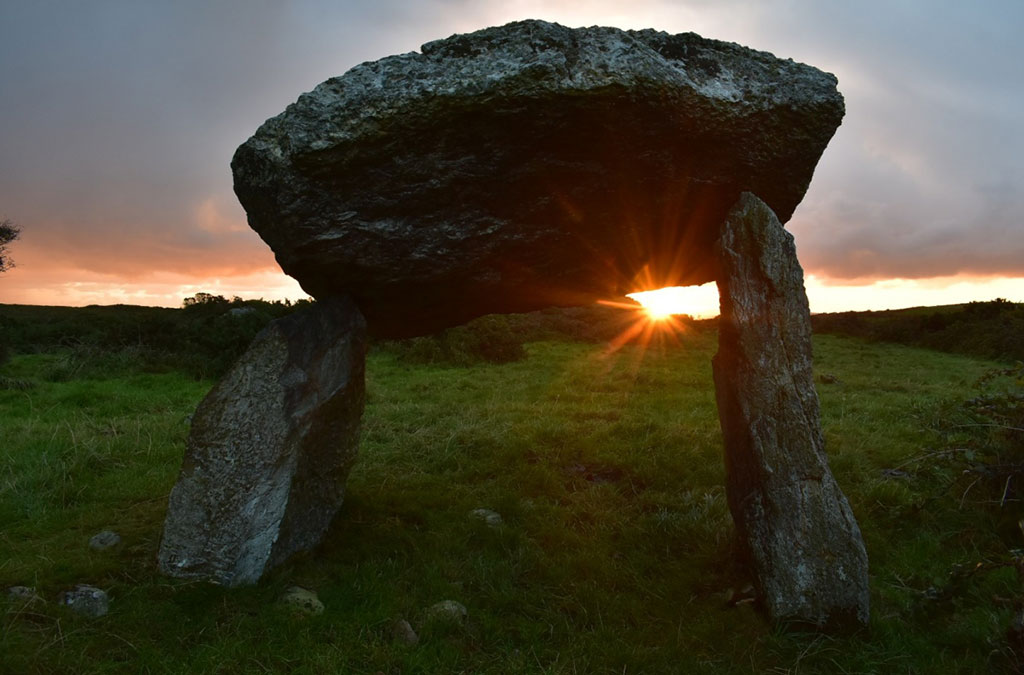
Ffyst Samson
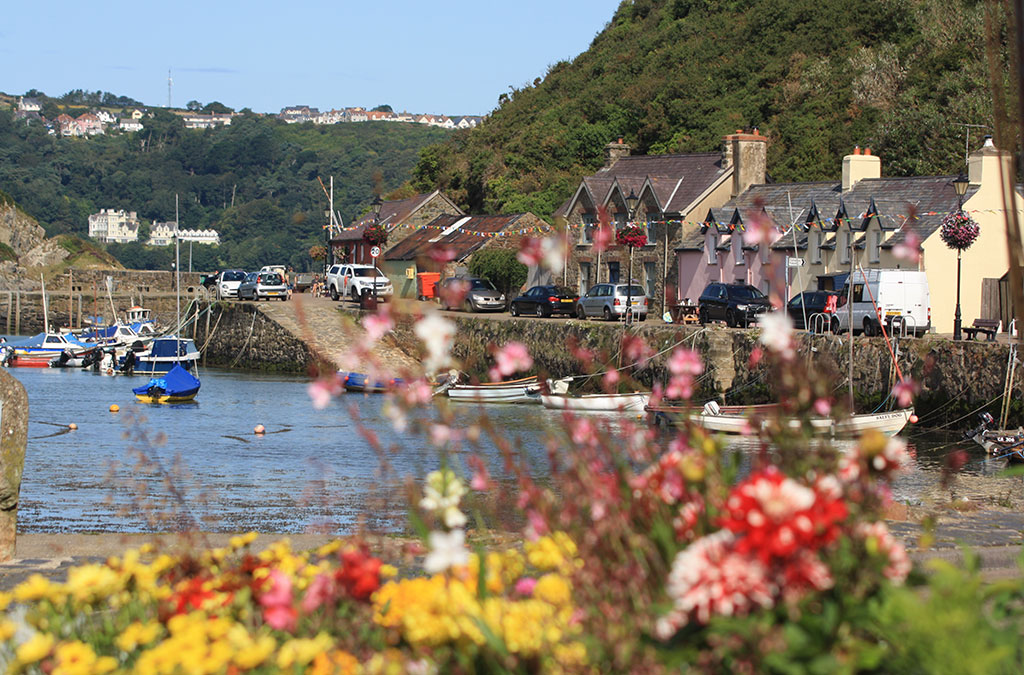
Fishguard Lower Town
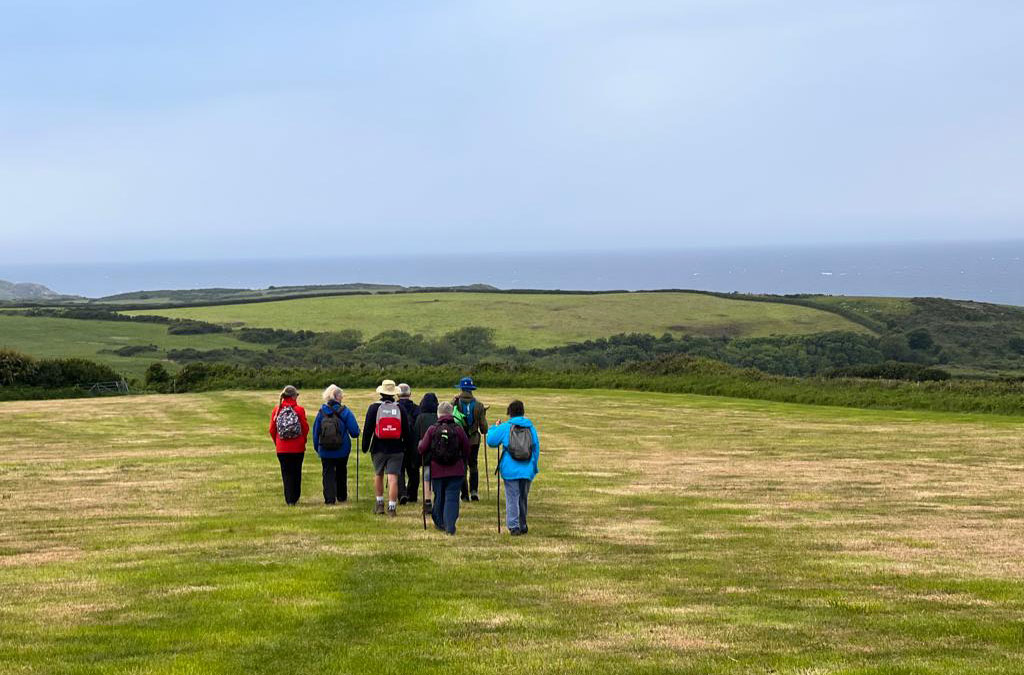
Pencaer Peninsula
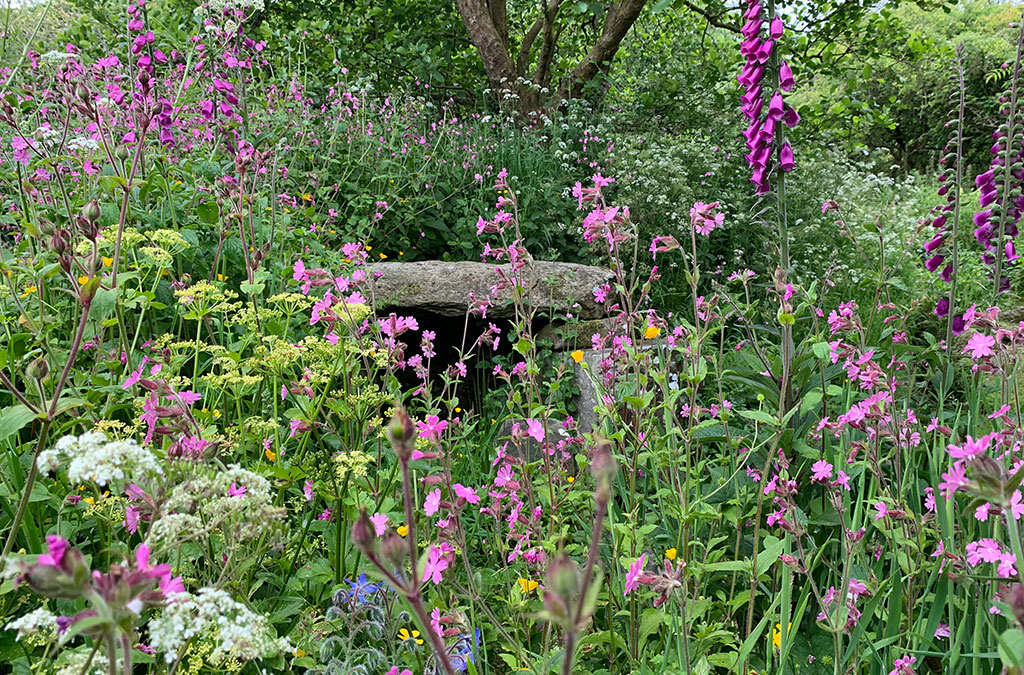
Llanwnda Holy Well
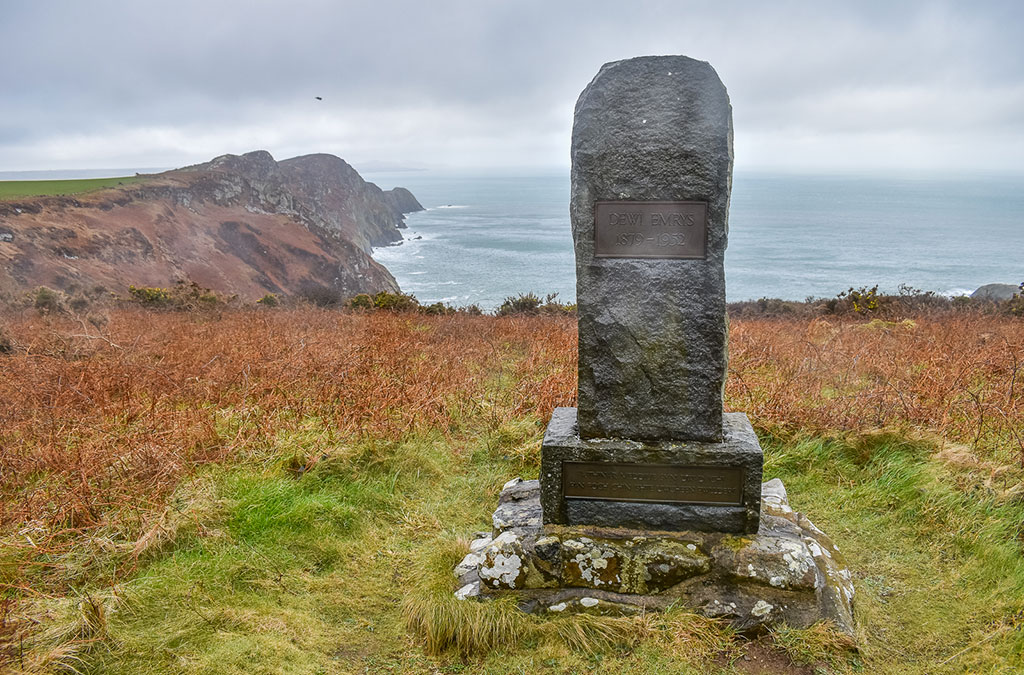
Dewi Emrys Stone
St Gwyndaf Takes a Fall and a Monastic Punch Up!
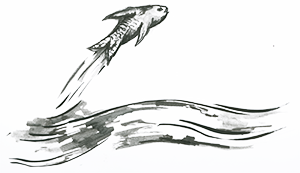
The church at Llanwnda goes right back to the sixth century when the Irish Sea transported Celtic saints between Ireland, Scotland, Wales, Cornwall and Brittany. Although we like to think of these saints as being pious and saintly, which they most likely were, they were also prone to the same weaknesses we have to this day.
St Gwyndaf, for example, gave us his name for the church in Llanwnda, but this holy man from Brittany is also thought to have had something of a temper. He was thrown from his horse crossing a stream, by a fish jumping. He broke his leg in the fall and legend has it that he cursed the stream in his anger to be barren of fish, which apparently it is to this day.
He wanted to name a holy well after himself too. St Aidan of Ferns took exception to this and the two saints ended up in a very un-saintly brawl over the naming rights. The Irishman must have been as good with his fists as well as with his prayers and duly emerged the victor. We don’t know which well they were fighting over but there is a St Aidan’s Well at Whitesands near St Davids which might fit the story perfectly as this is where sailors and pilgrims from Ireland would have landed after crossing the Irish Sea on their way to St Davids.
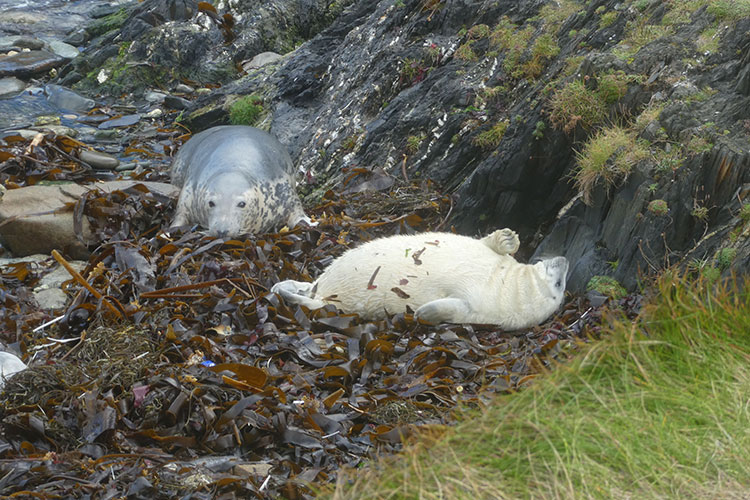
SEALS
The whole stretch of the Pen Caer Peninsula is wild and of volcanic geology, with numerous opportunities to connect with nature and wildlife, be it with the many seal coves, rare species of birds such as choughs or dolphins and porpoises off the coast.
This area of quiet inlets is home to Atlantic seals that come up onto the beaches to have their pups in September and October. (Please do not approach them as the mothers may abandon pups if they are spooked, even by well meaning visitors.) The seal and pup pictured here were in one of these seal coves in early October.
Sign up for our Newsletter
Be the first to know about guided events being offered along the route and all the latest developments along the route.

